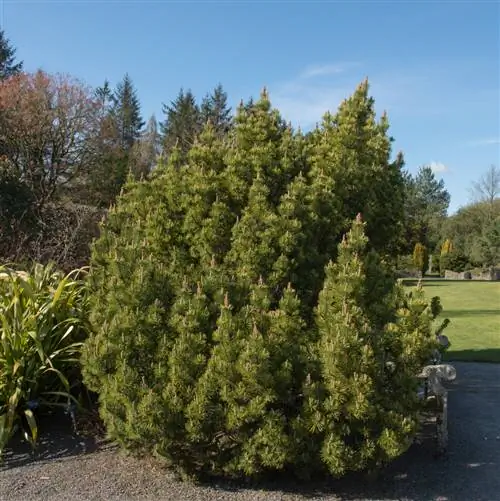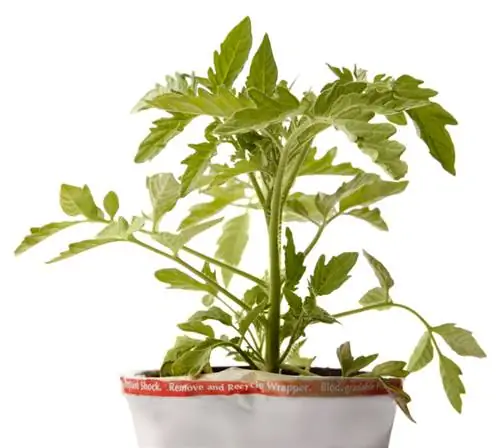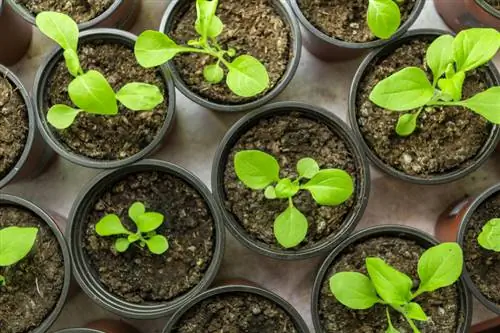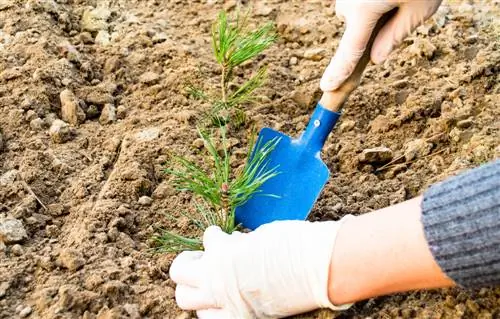- Author admin [email protected].
- Public 2023-12-16 16:46.
- Last modified 2025-01-23 11:21.
Although pines are very undemanding and easy-care trees, it will still benefit their growth if you dedicate a little time and care to your conifer. With the right tips, your pine tree will grow into a magnificent tree. Alternatively, you can also keep the pine tree as a bonsai. You can read here what you need to consider about the different types of cultivation.

How do I optimally care for a pine tree?
To optimize the care of a pine tree, you should choose a sunny location, fertilize every 14 days, always keep the substrate moist and avoid waterlogging. As a bonsai, regular pruning and removing old needles and buds are crucial.
Pines need light
Caring for a pine tree includes, among other things, ensuring there is sufficient light. Right from the start you should choose a sunny location. Avoid allowing your pine tree to grow too close to buildings or walls or for other tall trees to block its light. If you keep your pine tree in a pot, it is best to place it on the windowsill so that the lower branches also get light.
The substrate
Pines are very undemanding when it comes to soil conditions. However, some measures optimize development.
Fertilize
You should fertilize a bonsai pine tree every 14 days with a liquid fertilizer (€4.00 on Amazon). During the winter, stop adding fertilizer completely.
Pouring
Although the pine can tolerate prolonged drought, it is recommended to keep the soil moist all year round. However, you should avoid waterlogging.
Keeping the pine tree as a bonsai
In order to maintain the bonsai shape of your pine trees, regular shortening of the shoots is necessary. Here's how to do it:
- Make prunes in winter when the least amount of resin comes out of the cut
- In July and August, cut back all shoots that are too long to 1 cm, pick off old needles
- Pinch off buds from September to November
- repeat the process in March or April
- In May remove the new candles and young shoots
- remove the old needles from the previous year in October
Detecting diseases
The following care errors are often responsible for growth disorders:
- incorrect watering (waterlogging)
- Repotting
If three-year-old needles turn yellow, there is no need to worry. This is a natural process. It is different when new needles become discolored. There could be a fungal disease here.






